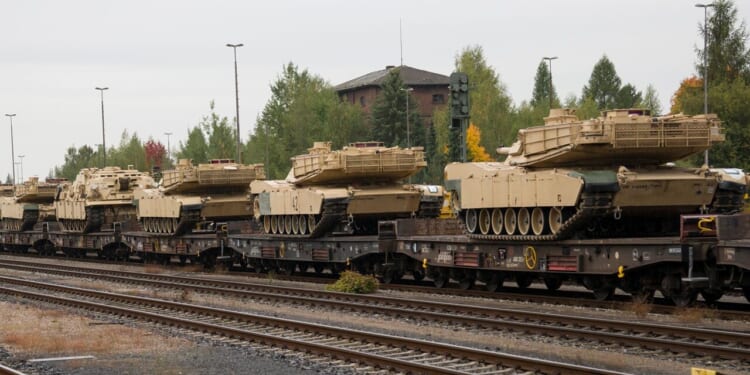The US military is now paying more to keep its older ground systems operational, yet without achieving increased mission-capable rates.
The majority of ground vehicles used by the United States Army and the United States Marine Corps are unable to meet mission-capable standards, a government watchdog group warned last month. The services were struggling to maintain the vehicles due to several factors, including a shortage of parts and a lack of talent to keep the vehicles running.
According to the Government Accountability Office’s (GAO’s) newly published “Weapon System Sustainment: Various Challenges Affect Ground Vehicles’ Availability for Missions” report, none of the United States Army’s vehicles reviewed met the service’s goal of “availability 90 percent of the time” during fiscal year 2024 (FY24), which ended on September 30, 2024.
The GAO, which also reviewed 18 different types of US Army and Marine Corps ground vehicles, including tanks, armored personnel carriers (APCs), and self-propelled artillery, further reported that a majority were not fully capable or available for potential missions when needed. It also warned that vehicle readiness is on a downward slide.
“Since FY 2015, mission capable rates declined for 16 of the 18 vehicles we reviewed,” the GAO wrote.
The Army and Marine Corps Have Scaled Back “Depot Overhauls”
The GAO report noted that two key challenges were present across the 18 vehicles studied: a lack of spare parts and materiel needed to keep the vehicles properly maintained, and a lack of updated (current) technical data, including manuals and drawings, of the specific equipment needed. In some cases, the Army was able to mitigate the issue by “harvesting parts from vehicles being phased out of service” to keep the current fleet running.
That was coupled by a shortage of trained/skilled maintainers in Army service.
The GAO also noted that Army depot overhauls, which handle the maintenance needs of the vehicles, dropped from 1,278 in fiscal year 2015 (FY15) to only a dozen in FY24. The watchdog cited a US Army official who stated that the service had “accepted the risk from the decision to reduce funding for overhauls,” which was understood to save money but negatively impact mission-capable rates for most vehicles.
The Marine Corps also saw its own substantial reduction of depot overhauls, declining from 725 in FY15 to 163 by FY24.
Readiness Is Down, but Costs Are Up
In spite of the savings from reduced depot overhauls, the GAO study found that even as mission-capable rates continued to decline, sustainment costs had increased for most of the vehicles. Maintenance costs increased for nine of the 11 ground vehicles in the GAO’s review.
The United States Army’s M1 Abrams in particular saw its sustainment and maintenance costs almost double between FY15 and FY23. The entire fleet saw its costs rise by more than $181 million.
The United States Marine Corps saw mixed results in the GAO report. Although its “fleet-wide maintenance costs decreased” in that same time period, its per-vehicle maintenance costs saw an increase for four of its seven vehicles reviewed.
“Historically, the costs to sustain a weapon system from initial operations through the end of its life account for approximately 70 percent of a weapon system’s total life-cycle cost,” the report also explained. As these costs go up, so too does the total life-cycle cost.
The report added, “In fiscal year (FY) 2023, the Army and Marine Corps spent more than $2.3 billion combined on depot maintenance of their ground combat vehicles.”
The US military is now paying more to keep its older ground systems operational, yet without achieving increased mission-capable rates. These issues could impact the ability of the services to replace those platforms with more reliable and newer vehicles.
About the Author: Peter Suciu
Peter Suciu has contributed over 3,200 published pieces to more than four dozen magazines and websites over a 30-year career in journalism. He regularly writes about military hardware, firearms history, cybersecurity, politics, and international affairs. Peter is also a contributing writer for Forbes and Clearance Jobs. He is based in Michigan. You can follow him on Twitter: @PeterSuciu. You can email the author: [email protected].
Image: Shutterstock / Andreas Wolochow.


















